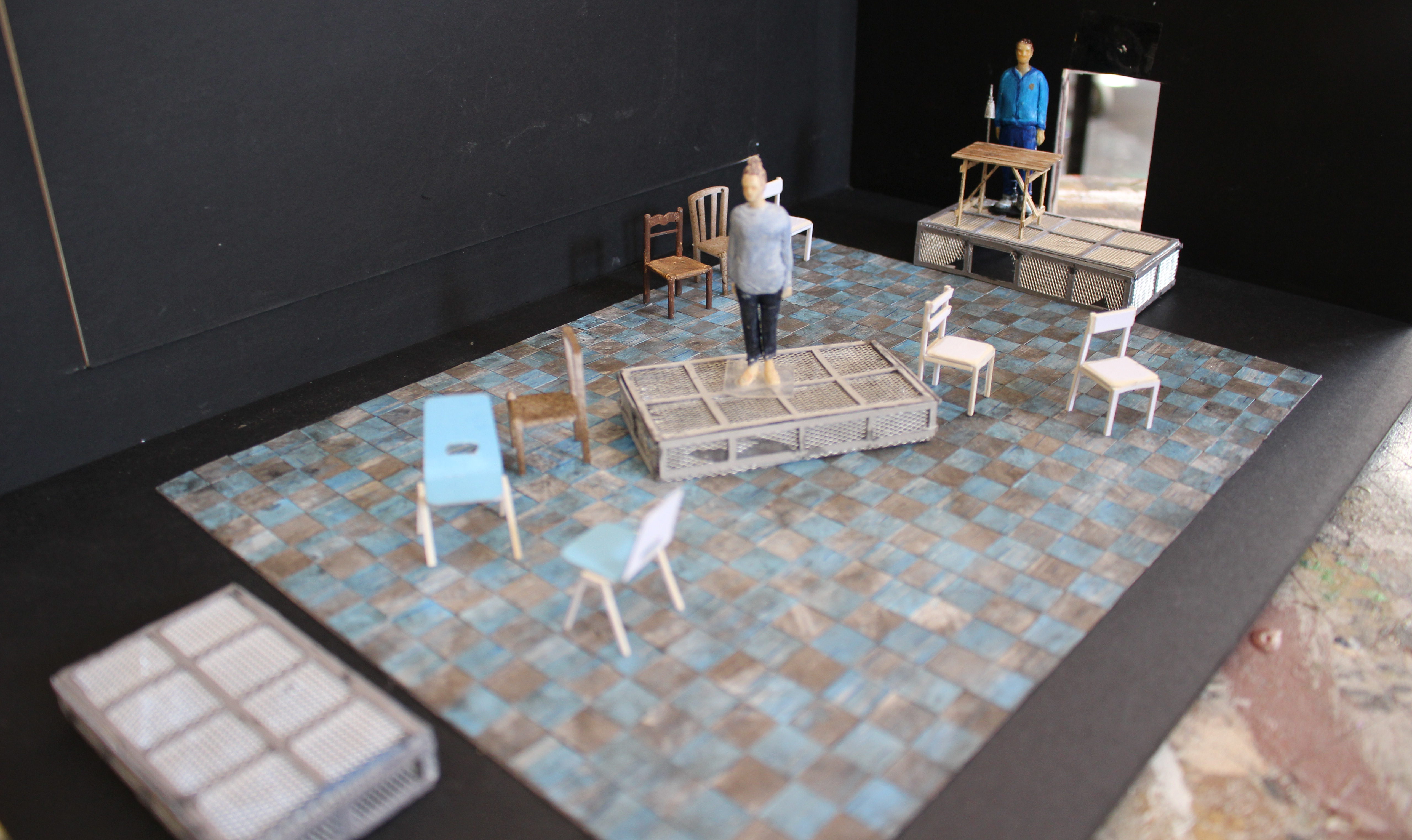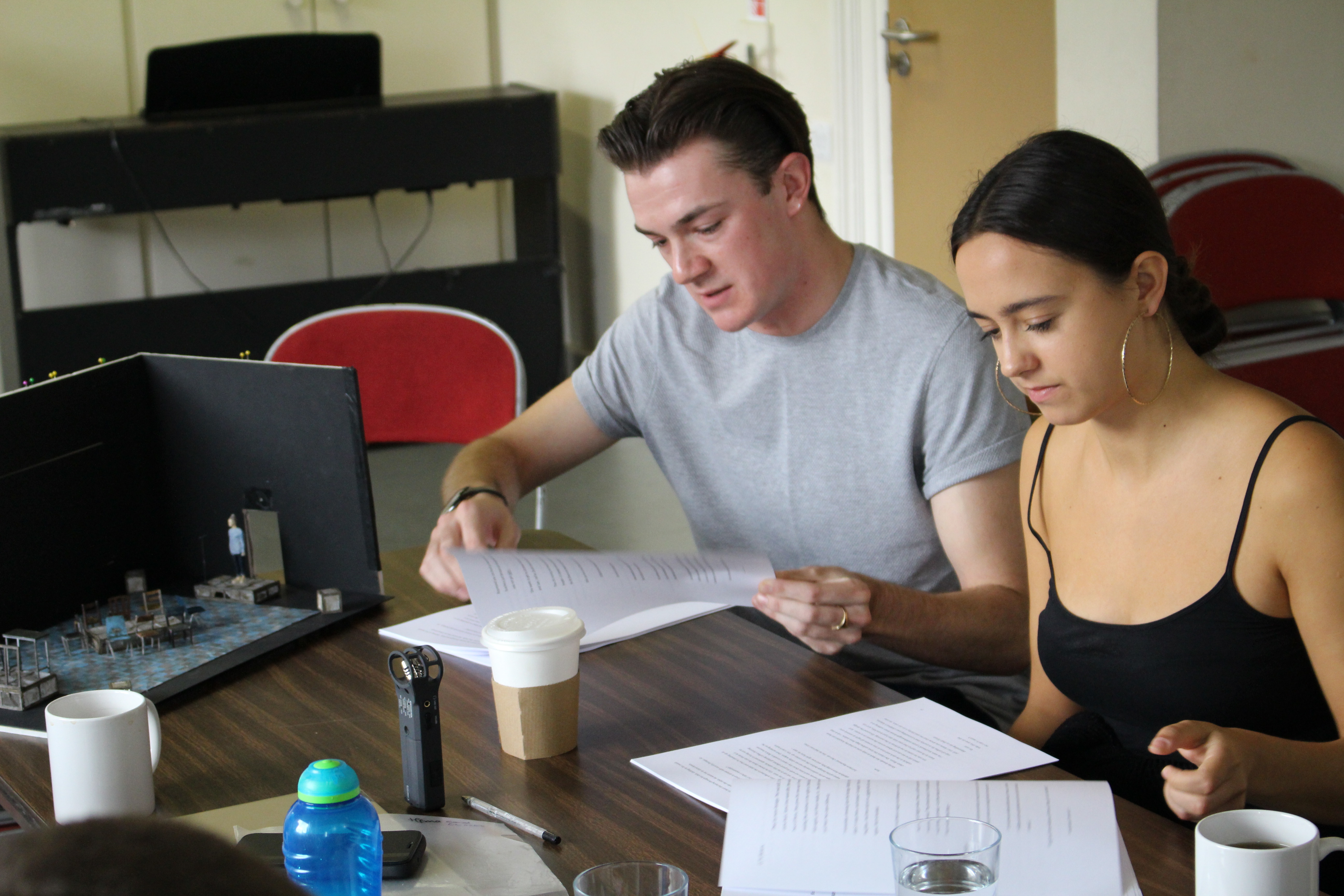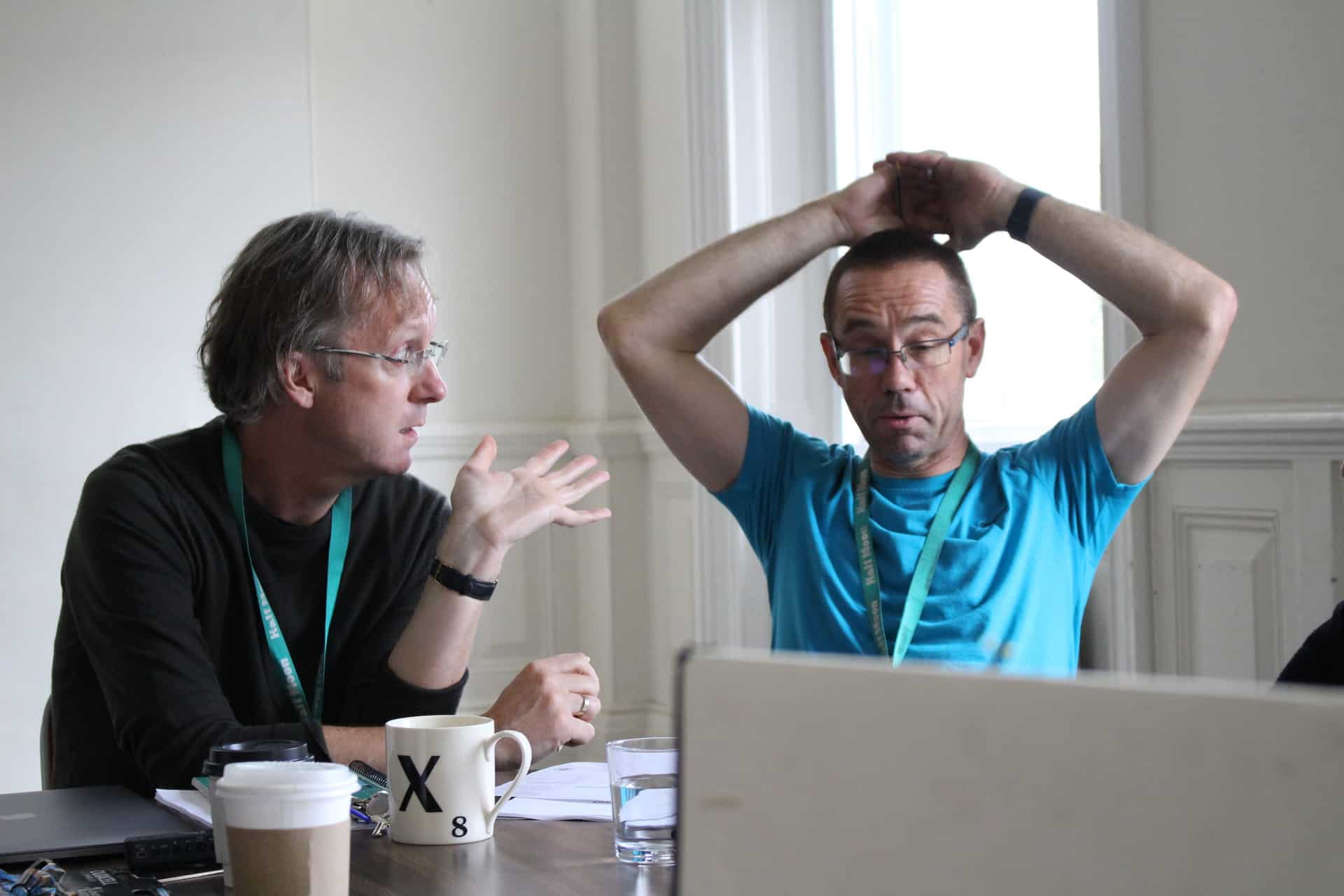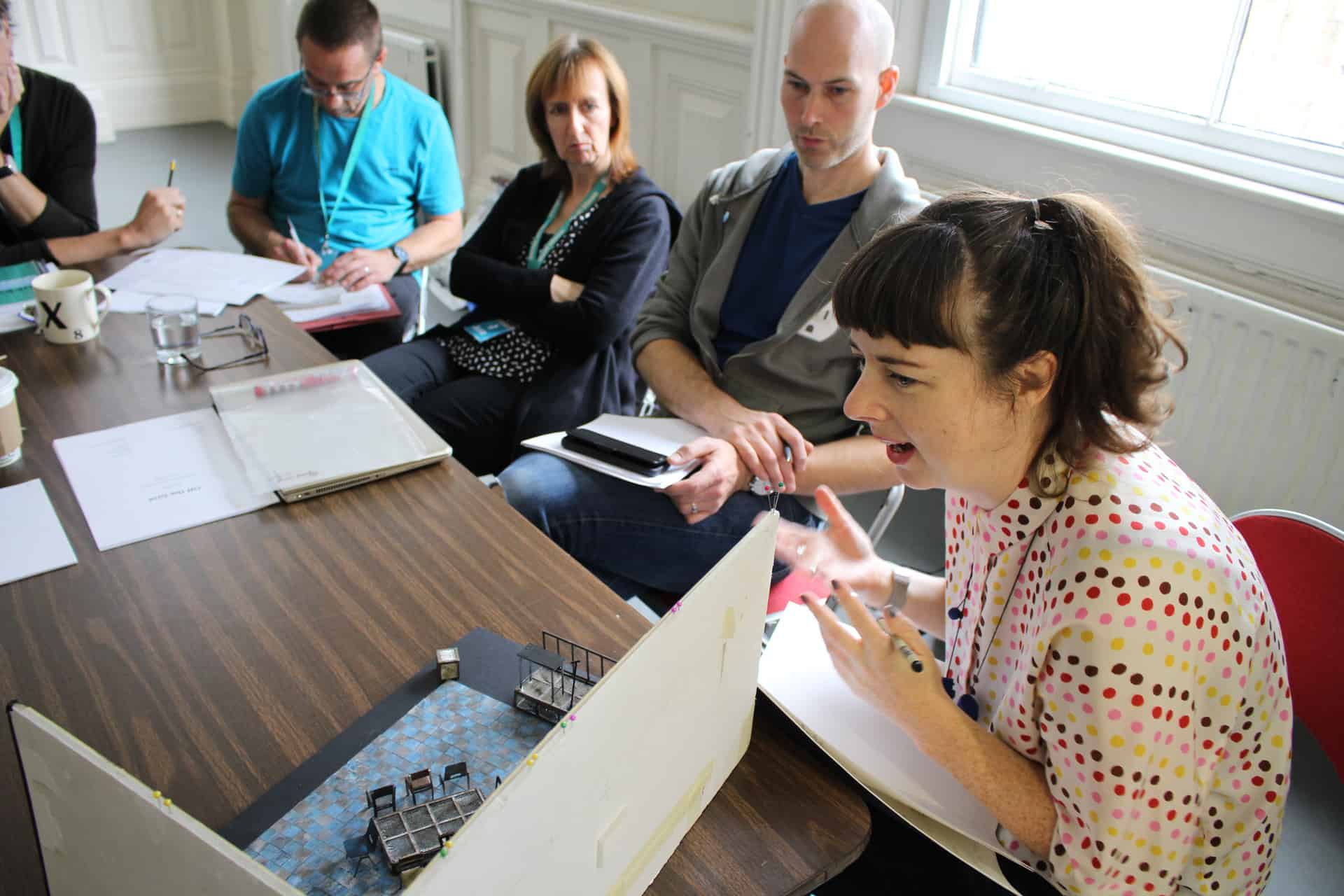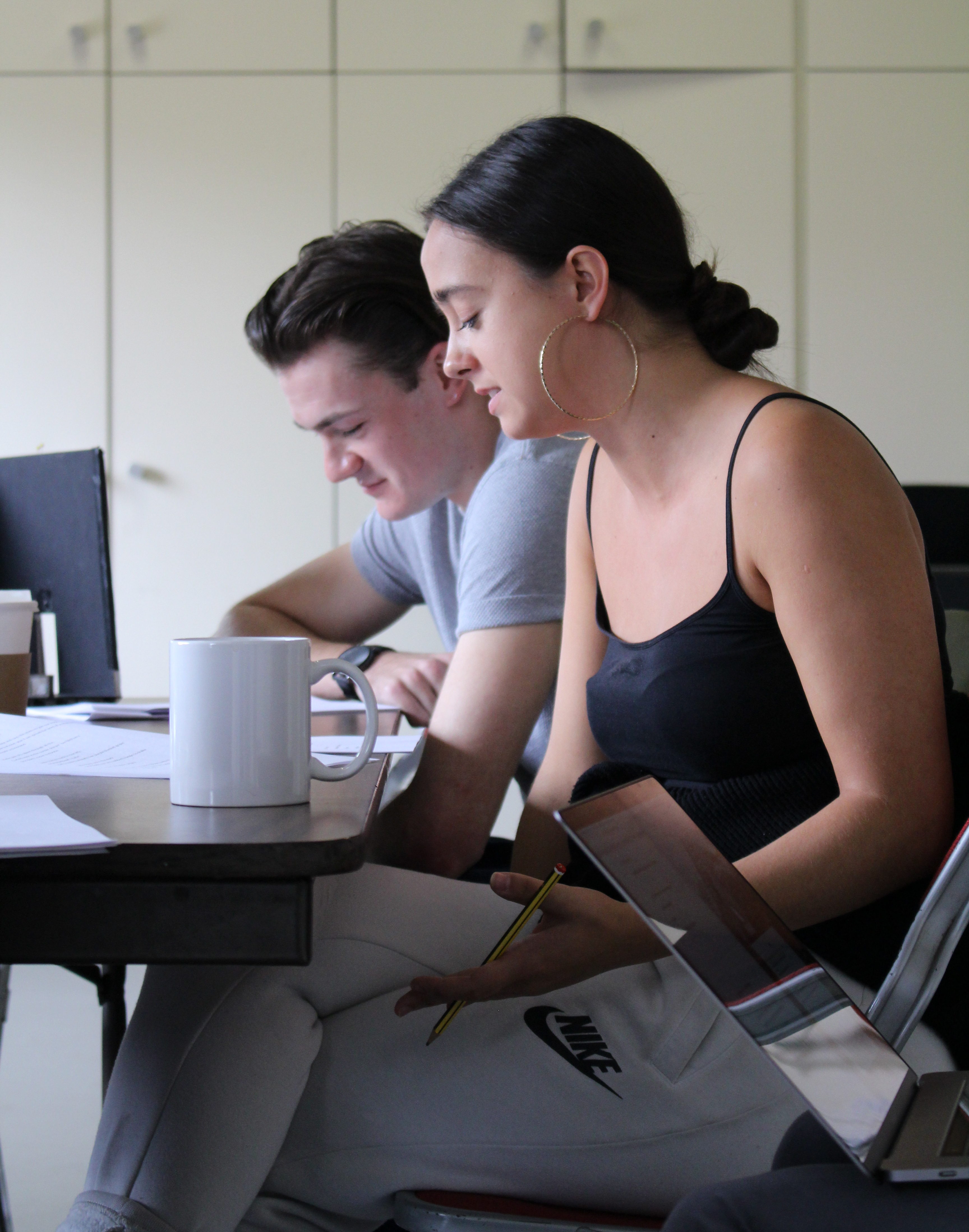Next week Off The Grid starts an intensive two-week rehearsal period at Half Moon in London, before embarking on its national tour. When the performers arrive they will be off-book, the design will already be fully built in the rehearsal studio, and the sound and composition will be cued: but the potential of all those elements together is what will be explored through the rehearsal fortnight.
The integration of sound and design really began two years ago with a clear steer from my dramaturg on the piece (and its director) Chris Elwell, Director and CEO of Half Moon.
Originally conceived as a show for one performer playing multiple roles, Off The Grid has evolved in response to various stimuli. It also started as much of my other writing does – exploring an adventurous structure and timeframe through a mixture of poetic and prosaic language, and with the imposed limitation of as few bodies on stage as possible (and in truth, as few things on stage as possible).
In my head I was writing a challenge for a solo performer on a bare stage, where the words could transition an audience through multiple characters, locations and timeframes across a seven-year period.
I wanted the leaps of imagination the audience had to take to mirror those within the play’s narrative, as over seven years a 13 year-old boy constructs a series of fantasy tales to try and protect his 3 year-old sister from the gritty realities of their existence – transforming what was in front of her, through the hopefulness of what she could imagine was there instead.
(Performers Bradley Connor and Jesse Bateson in a read-through at Half Moon)
Interestingly in the play, much of the drama is generated by that transformation having its limits, and the pressures of reality being too strong to ignore – the fantasy has to break at some point.
It was much the same for that early version of the play – the reality of the single performer on the bare stage was too much of a leap for the structure, timeframe and multiple characters of the piece. It would break under the strain.
Chris’ all-important steer at that early draft stage was to think about the piece as more of an event – something full and present and arresting that could potentially immerse and beguile a teenage audience both physically and sonically to enter its world, rather than the pared-back empty-space aesthetic that was in my head.
We discussed a piece that might occur through headphones using binaural sound or even online – far leaps from the live medium I’m used to – but for the next draft finally settled on a structure of eight scenes that invited different voices to ‘emerge’ (we didn’t know exactly how or from whom yet) and eight indicative objects pre-set within an installation, which an audience could explore before the show began happening all around them.
Accompanying this was my idea of a musical theme or motif in eight parts – one for each scene – but which could accumulate one-by-one as the narrative progressed, indicating a gradual coming-together of various aspects of the story. I’m no composer, but this idea for a sonic structure of accumulation that could support the storytelling and transport the audience alongside the text really appealed.
(Chris Elwell (L) in conversation with lighting designer Phil Clarke (R))
But then in the read-throughs of the second and third drafts Chris brought in not one but four actors. Even then, perhaps privately and definitely doggedly, the play was still about one live performer in my own head. Whilst I was resistant at first though, clinging on to my first ideas, the invitation for theatrical exploration was beautifully poised by Chris.
The idea of bringing in other performers wasn’t to radically re-cast the play for four actors or to naturalise it away from its poetic storytelling style, but instead to start entertaining the sonic texture of other voices, and the physical presence of other bodies in the space.
These could interrupt or challenge the single character’s memory of events, and as we played in the room with different combinations, it allowed us to step into a liminal and fluid dramaturgical world of remembrance and mis-remembrance, of doubtful narrators, of figures ghosting and echoing through the lens of one individual’s recollection of events across (by now in draft three) a whole decade of time.
How might a performer telling a story respond when being able to see and hear but not contact or touch the other person in it? How much control might that other performer be able to exert on our perception of the teller’s recollection – whether they’re lying or telling the truth, constructing another fiction or staying true to the facts? What happens when two timeframes can sonically and physically overlap on stage?
Through thinking about the visual (design) and sonic (sound) languages of storytelling simply in terms of the human form – bodies and voices in space, not yet conventional set design or musical composition – we discovered something completely different as a framing device for the whole world of the piece. It made more sense of the central character’s need to tell their story, and more sense of the way in which it was presented to the audience.
(A company read-through this September)
Fast forward nine months from that discovery, and five weeks ago the first rehearsal draft was read by what is now a cast of two performers (Bradley Connor and Jesse Bateson) in the company of Chris, myself, the designer Verity Quinn, sound designer and composer Guy Connelly and lighting designer Phil Clarke.
Hearing and seeing your scripts’ qualities presented back to you through the visual language of a set designer and sonic language of a composer and sound designer is a remarkable moment. What was also known to us all at that point was that as a result of coming together for the first time, the script, the design, the props and sound were still open to change.
Designer Verity Quinn talks about ‘trying to create a ‘gig-feel’ for the space – the actors moving among the audience, in a world inspired from squats, halfway houses, that kind of institutional world that people are sometimes shuffled through’, echoing the experiences of the characters in the story.
She also picks up on that liminal space of remembrance, where time and space are fluid rather than fixed, explaining how her design ‘evokes an environment that will have different triggers for different people: it’s definitely not one space or another and therefore not one time or another, so it’s more like a holding space or a limbo space.’
(Verity Quinn takes us through the model box)
Composer and sound designer Guy Connelly shares excerpts from his palette of sounds and compositions with us, framing his creative responses with his first encounter with the script and being ‘immediately quite entranced by the atmosphere of it. It’s quite dark and thoughtful and tense, but I also loved how you were thrown around in terms of time – you didn’t really know where you were which I really liked, really disorientating. I wanted to support that story… to try and use pieces of music that I could then warp in the way that the text warps, to support that journey.’
He has an idea about one single song being used in this way – we ask if one of the actors can sing, and he does a recording of the song there and then. We might use it as a pre-record, or live, or overlap both.
As a result of this collision of design and sound we start to realise the potential in the transitions between scenes – the bits where there are no text at all – and how they might also support the story world, opening up entirely new theatrical spaces where we can show crucial elements not made explicit in the writing.
In the afternoon we revisit some moments from the script with the performers where these ‘other voices’ appear. We give them tasks inspired by how we’ve seen the model box working, and what Guy has suggested as the source of sounds in the space – where amplified voices or live mics might stand – and they start to divvy up sections of the rehearsal text in a completely new combination. Their instinctive choices as the performers sat within this world are much stronger than mine, and I furiously scribble and highlight.
(Jesse and Bradley put the script through its paces)
One direct-address scene is completely rewritten to become two voices rather than one, moving between dialogue and commentary and two timeframes. The voice leading in and out of the scenes switches genders, to dovetail more efficiently with the practicalities of staging. Another scene is cut in half and we decide it’s a voice we need to hear, not see, and we’ll outsource an actor for half a day’s audio recording.
At the end of the day we realise the original final scene from the first draft, cut and changed over the last three, can be re-inserted because its power can now be fully realised – thanks to the refined framing that the sound design and physical design has introduced, and the rewrites today that have been inspired by them.
Off The Grid is going to be a truly compelling piece of new writing. This form of collaboration on new writing feels more akin to devising – being able to respond to all the theatrical languages in the room and shape, carve, rewrite and triangulate the performance world of the piece so that you have a genuine synthesis of elements. It’s an incredible day, and means the entire production team can hit the ground running this Monday.
Off the Grid is on tour from 7 November – 1 December 2018 with Half Moon.
Enjoy this blog? You can get more insights and receive weekly updates on competitions, awards, submission opportunities, jobs, training and workshops by signing up to Lane’s List – every Thursday, 50 weeks a year, to your inbox.
